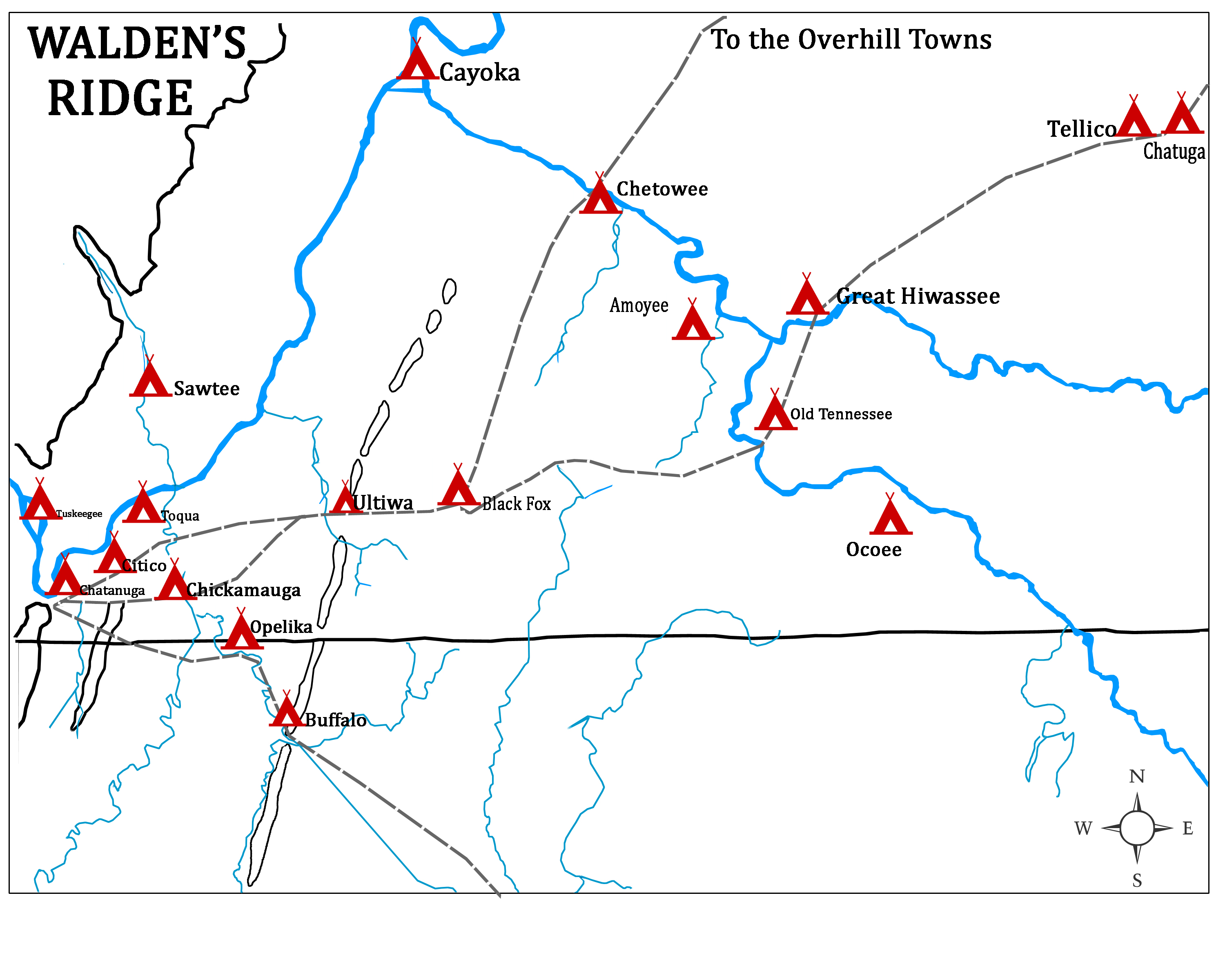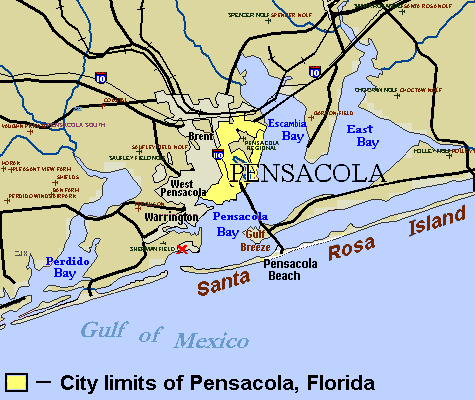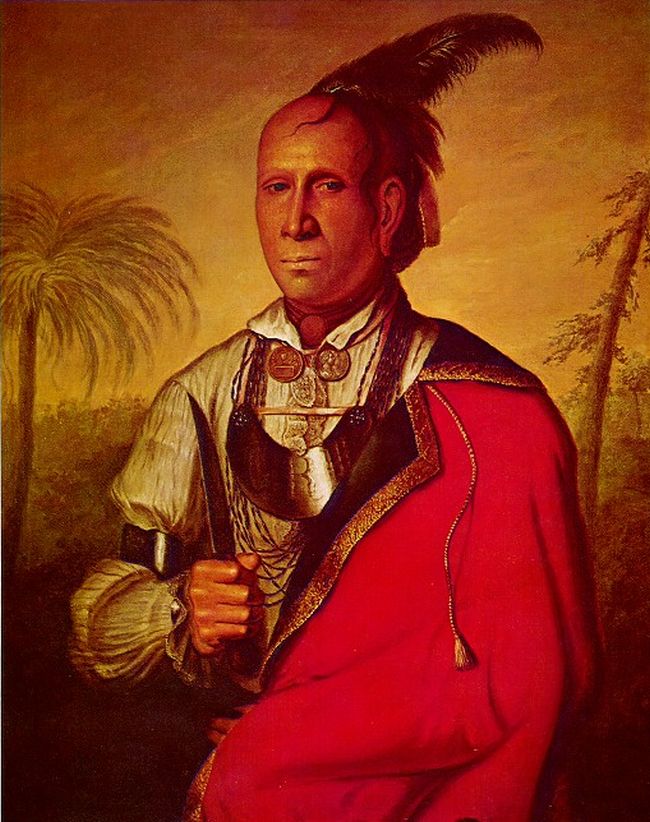|
John Watts (Cherokee Chief)
John Watts (or Kunokeski; 1750–1808), also known as Young Tassel, was one of the leaders of the Chickamauga Cherokee (or "Lower Cherokee") during the Cherokee–American wars. Watts became particularly active in the fighting after frontiersmen murdered his uncle, Old Tassel (1708–1788). Family life John Watts was the son of a sister of the chief known as Corn Tassel or Old Tassel. He was probably born about 1746 or 1750 in the Cherokee Nation. His father is believed to be the John Watts, "white trader who served Captain Demere as interpreter during the building of Fort Loudon whose wife was the sister of chiefs Old Tassel, Doublehead, and Pumpkin Boy.” His wife or wives are unknown, but according to researcher Don Martini he was the brother of Unacata (Whitemankiller) and a Cherokee killed at Boyd's Creek and was the father of John Watts, Big Rattlinggourd, and perhaps Hard Mush (Gatunuali) " Separation from the Overhill Towns Although Watts withdrew from the Overhill Tow ... [...More Info...] [...Related Items...] OR: [Wikipedia] [Google] [Baidu] |
Chickamauga Cherokee
The Chickamauga Cherokee is a Native American group who separated from the Cherokee from the American Revolutionary War to the early 1800s. Most of the Cherokee people signed peace treaties with the Americans in 1776-1777, after the Second Cherokee War. Followers of the skiagusta (war chief) Dragging Canoe moved with him down the Tennessee River, away from their historic Overhill Cherokee towns. Relocated to a more isolated area, they established 11 new towns to distance themselves from encroaching colonists. Frontier Americans associated Dragging Canoe and his band with their new town on Chickamauga Creek, and began to refer to the band as the Chickamaugas. The Chickamauga moved further west and southwest into present-day Alabama five years later, establishing five larger settlements. They were then more commonly known as the Lower Cherokee, a term closely associated with the people of the five lower towns. Dragging Canoe, the first Chicamauga chief, separated from the Upp ... [...More Info...] [...Related Items...] OR: [Wikipedia] [Google] [Baidu] |
Unicoi County, Tennessee
Unicoi County () is a county located in the U.S. state of Tennessee. As of the 2020 census, the population was 17,928. Its county seat is Erwin. ''Unicoi'' is a Cherokee word meaning "white," "hazy," "fog-like," or "fog draped," and refers to the mist often seen in the foothills and mountains of this far northeast county. Unicoi County is part of the Johnson City Metropolitan Statistical Area, which is a component of the Johnson City– Kingsport–Bristol, TN- VA Combined Statistical Area, commonly known as the " Tri-Cities" region. History This area was long inhabited by indigenous peoples, including the historic Cherokee who encountered European and English traders and settlers. The mountainous terrain made it less attractive to subsistence farmers. Unicoi County was created in 1875 from portions of Washington and Carter counties. Its first European-American settlers had arrived more than a century earlier but the population had been small. The county remained ... [...More Info...] [...Related Items...] OR: [Wikipedia] [Google] [Baidu] |
Arturo O'Neill
Arturo O'Neill de Tyrone y O'Kelly (January 8, 1736 – December 9, 1814) was a Spanish Army officer and colonial administrator. He came from a lineage that occupied prominent European positions and titles, since at least the 12th century. Biography Early years and military career Arturo (Arthur) O'Neill was born in Dublin, IrelandONEILL-L Archives. Consulted in May 22–26, 2010 (although his ancestors were from County Tyrone, now in Northern Ireland''Florida Irish: Hereditary Center. ARTHUR O’NEILL. First Governor of Spanish West Florida (1781 to 1793)''. Magazine.), on January 8, 1736. He was the third of five children of Henry O’Neill and Ana O’Kelly. One of his brothers was Lieutenant Colonel Niall O'Neill (later Nicolás O'Neill y O'Kelley). His family lost their lands in Ireland, which forced them to emigrate. His parents carried Arturo and his brothers to Spain. In 1752, O'Neill joined the Irish regiment in Ireland, as a cadet under the command of his cous ... [...More Info...] [...Related Items...] OR: [Wikipedia] [Google] [Baidu] |
West Florida
West Florida () was a region on the northern coast of the Gulf of Mexico that underwent several boundary and sovereignty changes during its history. Great Britain established West and East Florida in 1763 out of land acquired from France and Spain after the Seven Years' War. As its name suggests, it was formed out of the western part of former Spanish Florida (East Florida formed the eastern part, with the Apalachicola River as the border), along with land taken from French Louisiana. Pensacola became West Florida's capital. The colony included about two thirds of what is now the Florida panhandle, as well as parts of the modern U.S. states of Louisiana, Mississippi, and Alabama. As the newly acquired territory was too large to govern from one administrative center, the British divided it into two new colonies separated by the Apalachicola River. British West Florida included the part of former Spanish Florida, which lay west of the Apalachicola, as well as parts of former Fre ... [...More Info...] [...Related Items...] OR: [Wikipedia] [Google] [Baidu] |
Spanish Empire
The Spanish Empire, sometimes referred to as the Hispanic Monarchy (political entity), Hispanic Monarchy or the Catholic Monarchy, was a colonial empire that existed between 1492 and 1976. In conjunction with the Portuguese Empire, it ushered in the European Age of Discovery. It achieved a global scale, controlling vast portions of the Americas, Africa, various islands in Asia and Oceania, as well as territory in other parts of Europe. It was one of the most powerful empires of the early modern period, becoming known as "the empire on which the sun never sets". At its greatest extent in the late 1700s and early 1800s, the Spanish Empire covered , making it one of the List of largest empires, largest empires in history. Beginning with the 1492 arrival of Christopher Columbus and continuing for over three centuries, the Spanish Empire would expand across the Caribbean Islands, half of South America, most of Central America and much of North America. In the beginning, Portugal was ... [...More Info...] [...Related Items...] OR: [Wikipedia] [Google] [Baidu] |
Pensacola
Pensacola ( ) is a city in the Florida panhandle in the United States. It is the county seat and only city in Escambia County. The population was 54,312 at the 2020 census. It is the principal city of the Pensacola metropolitan area, which had 509,905 residents in the 2020 census. Pensacola was first settled by the Spanish Empire in 1559, antedating the establishment of St. Augustine by six years, but was abandoned due to a significant hurricane and not resettled until 1698. Pensacola is a seaport on Pensacola Bay, which is protected by the barrier island of Santa Rosa and connects to the Gulf of Mexico. A large United States Naval Air Station, the first in the United States, is located in Pensacola. It is the base of the Blue Angels flight-demonstration team and the National Naval Aviation Museum. The University of West Florida is situated north of the city center. The area was originally inhabited by Muskogean-speaking peoples. The Pensacola people lived there at th ... [...More Info...] [...Related Items...] OR: [Wikipedia] [Google] [Baidu] |
Clinch River
The Clinch River is a river that flows southwest for more than through the Great Appalachian Valley in the U.S. states of Virginia and Tennessee, gathering various tributaries, including the Powell River, before joining the Tennessee River in Kingston, Tennessee. Course The Clinch River is dammed twice: by Norris Dam, the first dam built by the Tennessee Valley Authority (TVA); and by the Melton Hill Dam, the only TVA dam with a navigation lock that is not located on the main channel of the Tennessee River. An important tributary of the Clinch River is the Powell River. The Clinch and Powell drainage basins are separated by Powell Mountain. Tributaries entering the Clinch River below Norris Dam but above Melton Hill Dam include Coal Creek, Hinds Creek, Bull Run Creek, and Beaver Creek. Poplar Creek enters the river below the Melton Hill Dam. History A peninsula located at the mouth of the Clinch River, later called Southwest Point, was important to generations of N ... [...More Info...] [...Related Items...] OR: [Wikipedia] [Google] [Baidu] |
Muscle Shoals, Alabama
Muscle Shoals is the largest city in Colbert County, Alabama, United States. It is located on the left bank of the Tennessee River in the northern part of the state and, as of the 2010 census, its population was 13,146. The estimated population in 2019 was 14,575. Both the city and the Florence-Muscle Shoals Metropolitan Area (including four cities in Colbert and Lauderdale counties) are commonly called "The Shoals". Northwest Alabama Regional Airport serves the Shoals region, located in the northwest section of the state in Muscle Shoals. Due to its strategic location along the Tennessee River, Muscle Shoals had long been territory of Native American tribes. In the late 18th and early 19th centuries, as Europeans entered the area in greater number, it became a center of historic land disputes. The new state of Georgia had ambitions to anchor its western claims (to the Mississippi River) by encouraging development here, but that project did not succeed. Under President ... [...More Info...] [...Related Items...] OR: [Wikipedia] [Google] [Baidu] |
Skiagusta
A skiagusta (ᎠᏍᎦᏯᎬᏍᏔ, also ''asgayagvsta'', also ''skyagunsta'', also ''skayagusta'') (ᎠᏍᎦᏯᎬᏍᏔ, ''asgayagvsta''), also spelled ''skyagusta'', ''skiagunsta'', ''skyagunsta'', ''skayagunsta'', ''skygusta'', ''askayagusta'', ''asgayagusta'', ''skyacust'', or ''syacust''.Cherokee has 17 verb tenses, 10 persons, and six tones. See is a Cherokee title for a war chief, known as the '''red chief' ''in times of turmoil. The skiagusta was the highest possible rank for a red chief; however, he remained subordinate to the council of the 'white', or peace, chief in non- tactical matters, even during wartime. Cherokee leaders Before the 1794 establishment of the Cherokee Nation, the Cherokee people had no standing government. The citizens were all considered equal, although those with the ability to speak well were highly regarded and held more power in council. The Cherokee people as a whole were historically connected by a decentralized and loose confederacy of ... [...More Info...] [...Related Items...] OR: [Wikipedia] [Google] [Baidu] |
Cherokee Nation (19th Century)
The Cherokee Nation ( or ) is the largest of three federally recognized tribes of Cherokees in the United States. It includes people descended from members of the Old Cherokee Nation who relocated, due to increasing pressure, from the Southeast to Indian Territory and Cherokees who were forced to relocate on the Trail of Tears. The tribe also includes descendants of Cherokee Freedmen and Natchez Nation. As of 2024, over 466,000 people were enrolled in the Cherokee Nation. Headquartered in Tahlequah, Oklahoma, the Cherokee Nation has a reservation spanning 14 counties in the northeastern corner of Oklahoma. These are Adair, Cherokee, Craig, Delaware, Mayes, McIntosh, Muskogee, Nowata, Ottawa, Rogers, Sequoyah, Tulsa, Wagoner, and Washington counties. History Late 18th century through 1907 After Cherokee removal on the Trail of Tears, the Cherokee Nation existed in Indian Territory. After the American Civil War, the United States promised the Cherokee Nation "a p ... [...More Info...] [...Related Items...] OR: [Wikipedia] [Google] [Baidu] |
Principal Chiefs Of The Cherokee
Principal Chief is today the title of the chief executives of the Cherokee Nation, of the Eastern Band of Cherokee Indians, and of the United Keetoowah Band of Cherokee Indians, the three federally recognized tribes of Cherokee. In the eighteenth century, when the people were primarily organized by clans and towns, they would appoint a leader for negotiations with the Europeans. They called him ''Uku'', or "First Beloved Man". The title of "Principal Chief" was created in 1794, when the Cherokee began to formalize a more centralized political structure. They founded the original Cherokee Nation (19th century), Cherokee Nation. The Cherokee Nation–East adopted a written constitution in 1827, creating a government with three branches: legislative, executive, and judicial. The Principal Chief was elected by the National Council, which was the legislature of the Nation. The Cherokee Nation–West adopted a similar constitution in 1833. In 1839 most of the reunited nation was reunit ... [...More Info...] [...Related Items...] OR: [Wikipedia] [Google] [Baidu] |
Black Fox (Cherokee Chief)
Black Fox (c. 1746-1811), also called Enola, was a Cherokee leader during the Cherokee–American wars. He was a signatory of the Holston Treaty, and later became a Principal Chief of the Cherokee Nation. Early leadership Named at birth Enola (also rendered Inali or Enoli), Black Fox was born about 1746.O'Dell, Larry''Encyclopedia of Oklahoma History and Culture''; "Inola;" retrieved February 28, 2013 He was a brother-in-law of Chickamauga Cherokee leader, Dragging Canoe, and accompanied him on his migrations south to the Lower Towns during the Cherokee–American wars. Black Fox was the "Beloved Man" (headman) of Ustanali, an important Native American settlement site which is located in what is today New Town in northwestern Georgia. As the fight with the frontier Americans drew to a close, he was one of the signers of the Treaty of Holston (July 2, 1791), an attempt at ending hostilities in the Holston River region. Principal chief In 1801 Black Fox was named by the coun ... [...More Info...] [...Related Items...] OR: [Wikipedia] [Google] [Baidu] |







